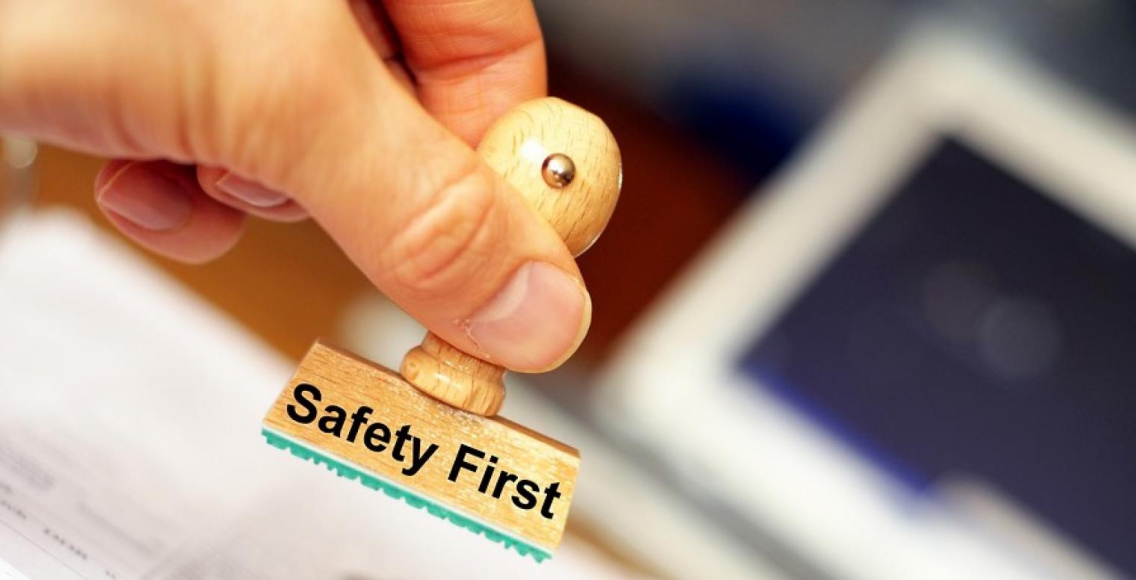As the workplace continues to shift and evolve, environmental, health and safety (EHS) compliance isn’t the sole concern of most businesses—it’s just one part of running a healthy and productive company. But compliance is still an absolute must in order to run a safe and effective business, and EHS managers are faced with the daunting task of managing regulatory compliance across multiple facilities and functions, often without a lot of resources and now likely virtual in some capacity. As we look at this new year, it's a great time to refocus and revisit your "pre-COVID" initiatives and goals for ongoing compliance and to mitigate risks.
Below we address some common challenges EHS managers face, as well as answer common questions they have about where to focus their efforts and possible consequences of non-compliance. We also focus on COVID-19 specific adjustments to programs and things to consider when conducting virtual audits.
Top EHS Regulations Every Business Should Prioritize
While all Environmental Health and Safety (EHS) regulations require compliance, certain fundamental requirements demand particular attention due to their broad applicability and significant consequences if overlooked. The following key regulations should be at the forefront of every organization's compliance strategy:
1. Do Your Duty: The General Duty Clause
The General Duty Clause of the United States Occupational Safety and Health Act of 1970 states:
“Each employer shall furnish to each of his employees employment and a place of employment which are free from recognized hazards that are causing or are likely to cause death or serious physical harm to his employees."
The general duty provisions are used in inspections where there are no specific standards applicable to the particular hazard involved, so they are relevant to all industries.
2. Every Breath you Take: Respiratory Protection Requirements
Employers are required to identify and evaluate respiratory hazards in their workplaces, since breathing is so important to life and health. Because of the relative ease with which hazardous and toxic chemicals can enter the air, inhalation usually becomes the first opportunity in the workplace to be exposed to an unsafe condition.
Because ambient air is all around, this potential unsafe condition presents itself long before you get anywhere near that electrical hazard, or that machine guarding issue, or that fall hazard. Various types of Occupational Exposure Limits (OELs) involving respiration have been established by a number of organizations, and are listed on many pages of OSHA’s website.
3. Ask Permission, Not Forgiveness: Air Emission Permitting
Air emission permitting, which in many cases must be obtained prior to construction or installation of the air emission source, can present a business risk. As a word to the wise, start the air permit application process early, since obtaining the appropriate permit can take some time and, because of the complexity of the Clean Air Act, the answer from the regulatory agency can very well be, “No, we can’t permit the emission source as you proposed. Modifications will need to be made.”
Between time needed to obtain the appropriate permit and/or to make the required modifications, your business could encounter lost time just when that great business opportunity walks through the front door, resulting in lost revenue.
Which regulations cause EHS managers the most trouble?
There are some regulations that are notoriously troublesome. Wouldn’t it be great if a regulatory agency like OSHA published a list of “Top 10 Most Frequently Cited Standards of the Year?” Of course it would be, and they do. Here is the list for fiscal year 2024:
- Fall Protection, General Requirements
- Hazard Communication, General Industry
- Control of Hazardous Energy (Lockout/Tagout), General Industry
- Ladders, Construction
- Respiratory Protection, General Industry
- Powered Industrial Trucks, General Industry
- Fall Protection Training, Construction
- Scaffolding, Construction
- Eye and Face Protection, Construction
- Machine Guarding, General Industry
OSHA also compiles a list of the Top 10 “Serious” violations as well as a list for the Top 10 “Willful” violations. Safety + Health magazine has compiled all three 2024 lists in an easy-reference infographic.
The United States Environmental Protection Agency (EPA) also gets into the game by publishing annual compliance and enforcement information. Now, if you are perusing these lists and feel overwhelmed thinking about how your organization is doing with any of these EHS issues, it may be time to consider an EHS audit.
What happens if I don’t comply with EHS regulations?
There are a number of consequences for failure to comply with any and all regulations that impact your business.
- Costly fines. The actual fine can be just the tip of the iceberg. Attorney and consultant fees, along with employee hours used to focus on the noncompliance, can far outstrip the cost of the fine itself. In addition, environmental regulatory agencies can add supplemental environmental projects to a notice of violation, further running up the tab for noncompliance.
- Stopped production. How many of your customers can be patient with your inability to provide finished products because a regulatory agency issued a cease and desist? EHS management should be part of business continuity discussions, maybe even extending to suppliers.
- Criminal charges. EHS noncompliance in its worst form can lead to criminal charges for both a business and individual employees.
- Damage to your company’s reputation. You have far more control over maintaining your company’s good reputation than you have in re-establishing it if you lose it.
- Higher employee turnover. Who wants to work for an organization that values its bottom line more than employee safety? And don’t forget to consider the lost time and costs spent hiring and training replacement workers.
- Higher workers’ compensation insurance. If you dent the family car, you know it will eventually impact your insurance costs. The same is true with workers comp, though obviously much more serious and on a larger scale in the case of an injured worker.
Digital Transformation in EHS Audits
As technology continues to evolve, many organizations have incorporated virtual or hybrid approaches to EHS compliance auditing. Whether to increase efficiency, reduce travel costs, or expand audit scope, digital approaches have become a permanent addition to the compliance toolkit.
What are some things to think about when conducting audits virtually?
If you’ve decided to continue to audit, albeit virtually, you may have realized the audit process takes a little more legwork upfront. Ask yourself:
- Are all of your documents, e.g. permits, procedures, training records, inspection records, etc. in order and able to be electronically shared?
- Is the electronic “data room” secure, or are you sharing requested documents via email?
- Have you devised a naming convention for documents to ensure auditors can easily identify what the document is, or are documents given names automatically by the scanner as you scan hard copies into electronic form?
Once you’ve gotten through providing the auditors the requested documents, consider:
- Have you worked through how the “onsite” inspection will look?
- Are you using virtual technology? If yes, is the platform secure?
- Can you get cellular or WiFi signal in the interior and exterior areas of your facility or will personnel need to record video of the operations and send it to the auditor once back in service?
Additionally, make sure you consider:
- What does your representative sample look like? Even during a full onsite audit, it can be difficult to see every nook and cranny of the facility.
- Now that your audits may have gone virtual, what does your plan look like to get the full value of conducting the audit? Is it asking the auditor to look at 10% of machines at random? Is it looking at 50% of fire extinguishers?
Whatever your approach, having a plan upfront, in advance of audit kickoff will help the process go more smoothly and ensure that while auditing in this “new normal” you’re getting the value you expected.
Are there new initiatives and requirements that need to be added to your audit program?
Whether conducting your audit program virtually, fully onsite, or a hybrid of both, don’t forget about any initiatives, company-specific programs, or requirements/orders currently in place. Is there a requirement to socially distance employees? Are face coverings required? Do you have an updated pandemic plan? Regardless of changes, or lack thereof to your company programs/policies, now is a great time to review your audit protocol to ensure questions have been updated and/or added to reflect these changes and additions to your program(s).
Where should I focus my efforts to ensure EHS compliance?
All of this information can seem a little overwhelming, making it hard to know what to do first or how to prioritize. Here are some of our suggestions:
- Get stakeholder buy-in. Find someone in your organization to sell EHS as a priority and make the business case for why it matters.
- Create a culture of EHS. While you may be thinking: “Easier said than done,” creating an EHS culture in the workplace is definitely worth the effort. In order to do this successfully, remember that the process cannot simply be from the top down or from the bottom up—the organization as a whole must be either in or out. Make sure to hold people accountable to the standards you set.
- Make ongoing training a top priority and continuous investment. Employees know when they are the recipient of an investment, and respond accordingly with loyalty and performance.
- Regularly audit your program. Regular EHS audits are an efficient and effective way to assess regulatory compliance, identify risk and find opportunities for process and program improvement.
- Reward high performers. Those who have embraced EHS are the ones who can show the rest of the organization how it’s done. Recognizing them for their good work will encourage them to continue down the right path and be a leader for others
While compliance is an absolute must, it’s no longer the sole purpose of an EHS program’s function. It’s also about ensuring a happy and healthy workplace where employees feel comfortable and encouraged to participate in EHS efforts.
Learn about our full EHS audit capabilities and contact our EHS Auditing and Compliance team.
Check out our first two blogs in this compliance assurance series: "EHS Compliance Assurance in a Not So Assured World" as well as "3 Stressors That Will Knock You Off Your Compliance Track."
Want more news and insights like this?
Sign up for our monthly e-newsletter, The New Leaf. Our goal is to keep you updated, educated and even a bit entertained as it relates to all things EHS and sustainability.
Get e-NewsletterHave any questions?
Contact us to discuss your environment, health, safety, and sustainability needs today.







